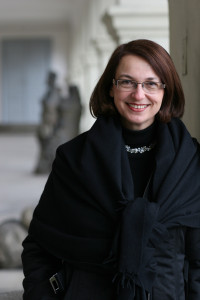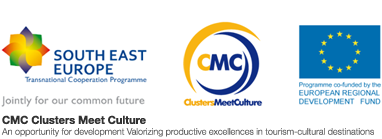 Stakeholder’s point of view: interview with Mirjana Koren, Director of Regional Museum Maribor
Stakeholder’s point of view: interview with Mirjana Koren, Director of Regional Museum Maribor
How did the Regional Museum Maribor experience the European Capital of Culture (ECC) project in 2012?
For the Regional Museum Maribor the key challenge of time is the integration with various publics. We encourage enthusiasm over heritage and we focus on its development potential. We endeavour for the mobility of museum collections and knowledge and our further professional training and education. Due to our strategic guidelines we immediately noticed the opportunity in the ECC project. We joined the project already back in 2007, when the city was preparing for its candidacy. We prepared three complex projects and in 2012 we actually managed to realize two of those. Our museum is one of the oldest museums in Slovenia. The permanent exhibition is conceived so as to depict the city as the heir of the European tradition, so it actually represented a historical platform of all projects that were prepared for ECC.
Was the museum actively involved in programme events of this project and in what way?
With the purpose of identifying the quantity and quality of museum materials we opened new furniture storage for the public. In order to facilitate the process of enthusiasm of citizens to explore the city’s history we selected a model of ambiental museum exhibitions. In the church tower we prepared a museum reconstruction of the residence of the last city fire guard, and along the furniture storage we reconstructed a joiner’s workshop. We used the ECC brand for the beginning of the systematic cooperation with European museums from our influential cultural circle. We designed the project Museoeurope and within the permanent exhibition we hosted selected museum exhibits and their responsible curators from museums in Austria, Germany, Italy and Poland. We will guarantee the project’s sustainability with the Gallery of European creativity, which will be established within the following years. ICOM Europe has agreed to become the long-term sponsor of the project.
Has the museum obtained any funds in relation to the ECC project and did the museum profit in this respect?
Yes, for the realization of projects in 2012 the museum obtained additional funds from the institution the city founded for the purposes of producing the ECC programme. However, at the same time the institution adopted a decision to make all events they financially supported available to visitors for free. This political decision was against the business logic. In the name of public success we said no to any financial success. I think it was about the fear of not having enough visitors. But in general it is about the lack of self-esteem, which probably originates from our smallness (there’s only 2 million of us).
Has the project contributed to a greater recognisability of the museum?
The Regional Museum Maribor is located in the city castle. The country and the city did not manage to complete the reconstruct and renovation of the castle, so a great part of the castle was closed in 2012. I see this as the major programme deficiency of the whole ECC project, because the city castle and the Regional Museum Maribor are the main historical entities and protocol opportunities of the region. So, instead of the whole story visitors only experienced its individual sequences. But nevertheless, the ECC project contributed to the museum’s greater appeal. With the programme we covered domestic and foreign public, amateurs and experts, children, youth and adults. Despite the lack of earmarked funds the promotion of the museum was effective. For example, our partners contributed to its promotion in their national environments. Further, the number of visitors quadrupled in comparison to previous years. The meaning of the project Museoeurope has also been recognized by the highest national expert body, so the museum was awarded a national recognition.
Was clustering in the area of the integration of heritage, tourism and creative industry a challenge for the museum?
The heritage stored in the Regional Museum Maribor has been connected to creative people for several years. We have designed a traditional project Gugalnik idej (Rocking chair of ideas), which is being implemented within the furniture storage project. To the museum we invite artists to tell us how the heritage speaks to them, how it encourages them and how it changes them. So far the tourist segment has not joined us. There are a lot of individual foreign guests that we address via our marketing tools, but there are practically no groups visiting us via “tour operators”.
Do you have any content-related proposals for a greater integration of participators in the before-mentioned areas?
In the Regional Museum Maribor we store around a hundred thousand items of cultural heritage and we can respond to nearly any contemporary initiative. Diverse museum collections and their stories enable intensive and direct experience. Integration of heritage and modern creativity is logical and necessary. Every segment on its own is less effective. Heritage is the inspiration of creativity, because the cause for creativity lies in heritage. A quality and creative individual work crowns the efforts of all institutions that deal with heritage. The search for answers to fundamental questions of life represents the basis of all dynamic social structures. Properly communicated heritage and sincerely presented modern creativity deepen the experience of tourists. For this reasons tourist economy should be the first generator of the integration of heritage and creative industries. And since it can ensure quick responsiveness to the activity of other two segments it can also enable the development of both industries.
